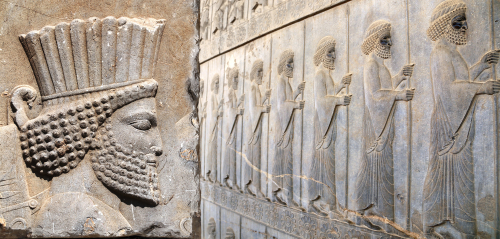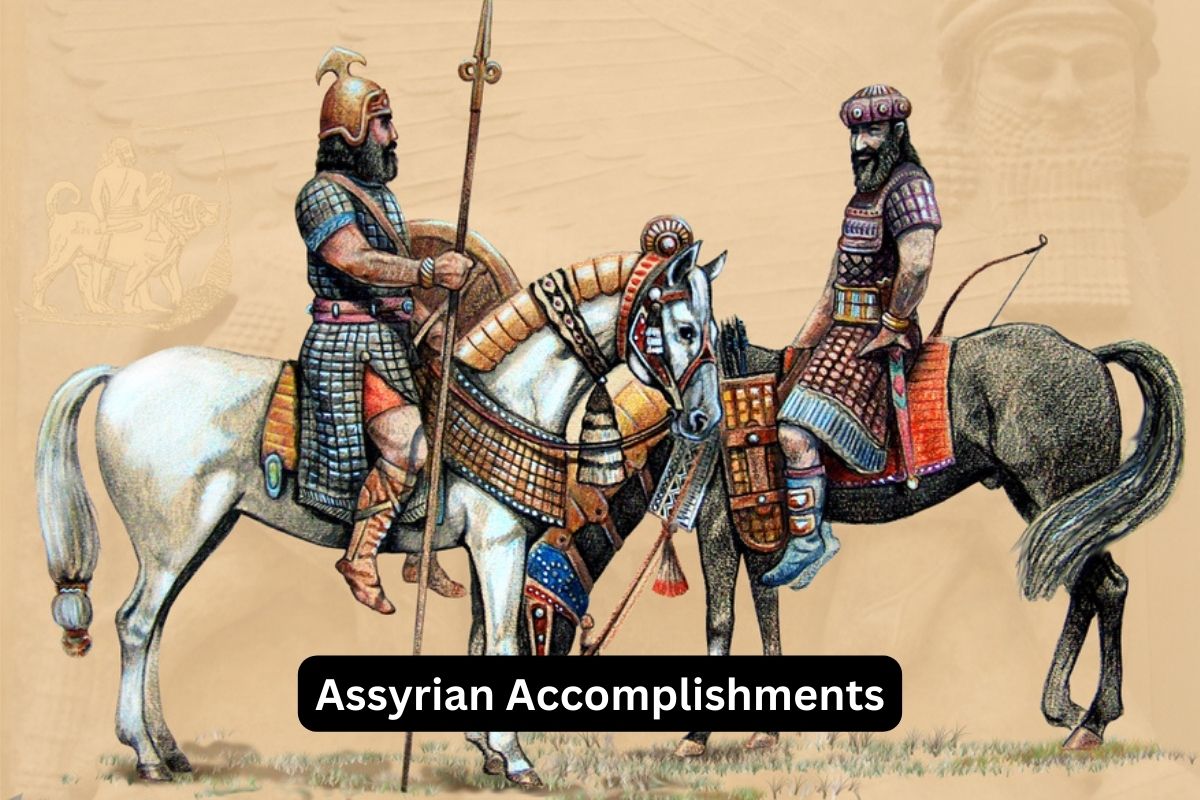The Assyrian civilization, which thrived in the ancient Near East from the 25th century BCE to the 7th century BCE, left a significant mark on history through various accomplishments.
Renowned for their military might, the Assyrians established one of the first known empires and developed advanced administrative systems to govern their vast territories.
Their cultural achievements included the renowned Library of Ashurbanipal, which preserved valuable texts and knowledge. The Assyrians also excelled in engineering and architecture, creating grand structures adorned with intricate reliefs.
They made contributions to astronomy, developed comprehensive legal systems, and mastered hydraulic engineering for efficient irrigation.
Through their record-keeping and communication systems, the Assyrians maintained efficient administration and preserved historical knowledge for future generations.
These accomplishments collectively demonstrate the remarkable achievements of the Assyrian civilization in multiple spheres of human endeavor.
Accomplishments of the Assyrian Empire
1. Military superiority
The Assyrians were renowned for their military prowess. They established a professional and disciplined army that employed innovative tactics and advanced weaponry.
Also Read: Facts About the Assyrians
They were skilled in siege warfare, using battering rams, siege towers, and tunnels to conquer heavily fortified cities. Their military success was attributed to their well-organized and centralized command structure, effective communication systems, and extensive training of their soldiers.

2. Empire building
The Assyrians built one of the earliest known empires in history. Through a series of military campaigns, they expanded their territory, conquering numerous city-states and kingdoms in the ancient Near East.
The Assyrians implemented a policy of subjugation, often deporting conquered peoples and relocating them throughout the empire. This practice helped to prevent rebellion and maintain control over their vast domains.
Also Read: Timeline of the Assyrian Empire
The Assyrian empire reached its zenith during the reign of King Tiglath-Pileser III and later kings such as Sargon II and Ashurbanipal.
3. Advanced administrative systems
The Assyrians developed a sophisticated administrative system to govern their expansive empire effectively. They divided their territories into provinces, each headed by a governor responsible for overseeing administration and collecting taxes.
The Assyrians implemented standardized legal codes, ensuring consistency in the application of justice across their empire. They also established efficient record-keeping practices using clay tablets to document various aspects of governance, including land ownership, trade, and legal transactions.
These administrative systems allowed the Assyrians to maintain control over their vast empire and enforce their laws and policies.
4. Library of Ashurbanipal
The Library of Ashurbanipal, located in Nineveh, was one of the most significant achievements of the Assyrians. King Ashurbanipal, who reigned during the 7th century BCE, assembled an extensive collection of cuneiform tablets in his palace.
The library contained a wide range of texts, including literary works, religious texts, scientific treatises, historical records, and administrative documents. It served as a center of learning and scholarship, attracting scholars from across the empire.
The Library of Ashurbanipal provided valuable insights into the language, history, religion, and culture of ancient Mesopotamia.
5. Engineering and architecture
The Assyrians excelled in engineering and architecture, leaving a lasting legacy of impressive structures.
They constructed grand palaces, temples, and fortifications characterized by massive stone walls and intricate stone reliefs depicting scenes of royal achievements and religious rituals. The Assyrians developed advanced construction techniques and employed skilled craftsmen to create architectural marvels.
Notable examples include the majestic palaces of Nimrud and Nineveh, adorned with ornate sculptures and the famous Ishtar Gate of Babylon, which showcased beautifully glazed brickwork.
6. Cultural preservation
The Assyrians actively preserved and promoted the cultural heritage of the lands they conquered. Instead of suppressing local traditions, they often assimilated elements of local culture into their own civilization. The Assyrians sponsored artistic and literary endeavors, promoting the production of poetry, epic tales, and mythological narratives.
They also engaged in restoration projects, reconstructing ancient temples and monuments, thereby safeguarding the cultural heritage of the region. This cultural exchange between the Assyrians and their subjects facilitated the spread of ideas, artistic influences, and cultural diversity within the empire.
7. Astronomical knowledge
The Assyrians made significant contributions to the field of astronomy. They developed a keen interest in celestial observation and recorded astronomical phenomena such as planetary movements, lunar and solar eclipses, and the positions of stars.
Assyrian astronomers meticulously observed the night sky and created detailed astronomical catalogs, which helped them develop accurate calendars. Their astronomical knowledge was not only important for timekeeping but also influenced religious and agricultural practices.
8. Legal systems
The Assyrians developed comprehensive legal systems and codes. These legal codes addressed various aspects of society, including property rights, contracts, marriage, inheritance, and criminal offenses.
The most well-known legal code of the Assyrians is the Code of Hammurabi, which predates the Assyrian Empire but influenced their legal practices.
The legal systems of the Assyrians were based on principles of justice, fairness, and the preservation of social order. They established courts and judges to enforce the law and ensure that disputes were settled in a just manner.
9. Hydraulic engineering
The Assyrians were skilled in hydraulic engineering, particularly in the construction of irrigation systems. They built complex networks of canals, aqueducts, and reservoirs to harness water resources for agricultural purposes.
These irrigation systems allowed them to control and divert water to arid regions, transforming them into fertile farmland. The advanced irrigation techniques employed by the Assyrians significantly increased crop yields and supported the growth of their empire’s economy.
10. Record keeping and communication
The Assyrians developed a sophisticated system of record keeping and communication. They used clay tablets as a medium for writing and documenting various aspects of their society. These tablets contained administrative records, correspondence, legal documents, historical accounts, and literary works.
The Assyrians established efficient postal networks and messengers to facilitate communication across their vast empire. This system enabled the dissemination of information, the coordination of administrative affairs, and the preservation of historical knowledge for future generations.
These accomplishments demonstrate the Assyrians’ achievements in fields such as astronomy, law, engineering, and communication, showcasing their intellectual and technological advancements during their reign.
